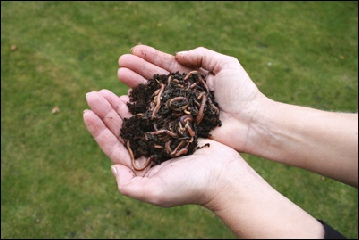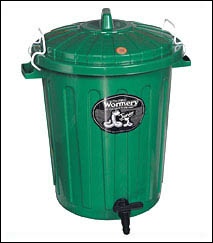















I have to admit a wormery is something that we have contemplated buying for a while but haven’t yet got round to doing it.
If read lots about using wormeries but haven’t yet met anyone who has actually got one hence the hesitation. I’m sure it would be a good think to have but I’d really like to speak to someone who has one before committing.
Anyway have one or not I felt that no list of gardening equipment would be complete without at least mentioning wormeries.
With lots of waste coming from the kitchen being organic it seems to make sense to use this to create what is described as a rich organic compost and liquid plant nutrients.
Garden soil is produced as a direct result of worm activity. Soil without a healthy worm population will become infertile. A wormery is an artificial attempt to create a worm friendly habitat in which the worms can flourish and they turn produce a rich black earth called vermicompost. This is moisture retentive and fine textured. It contains lots of beneficial microbes and bacteria, is rich in soluble plant foods and when incorporated into soil will improve the structure. Worms neutralise smells by aerating the material.
Worms process waste material best when the temperature is between 12°C and 23°C so the wormery should be set up in a warm position out of direct sunlight. In winter the wormery should be moved into a greenhouse or shed and provided with some insulation such as bubble-wrap, fleece, an old blanket etc.
Besides creating vermicompost the activity of the worms also produces a liquid fertiliser. This is so concentrated that it needs to be diluted one part to ten parts water before using as a plant food. This should be drained off regularly. Some wormeries have a sump or tap to facilitate this.
A worm will eat its own body weight in food each day; however it will take a few months before enough usable compost is produced.
Worms do not thrive in acid conditions and so you should avoid adding citrus fruit or onions to your wormery. Also avoid meat products as these may attract rats. Grass clipping should also be avoided as they will heat up the wormery as they decompose.
Although paper and cardboard can be added to the wormery, you should avoid glossy packaging or magazines due to the chemicals used in their production.
Coffee grounds, vegetable peelings, tea bags, dog hair, cooked food scraps, banana skins and fruit (other than citrus) can all be added to the wormery. To keep the conditions from becoming too acidic a lime mixture can be added fortnightly. Eggs shells also help reduce acidity. The addition of grit will help worm digestion. If you wish you can give your worms a treat by adding worm feed that can be bought from fishing suppliers.














